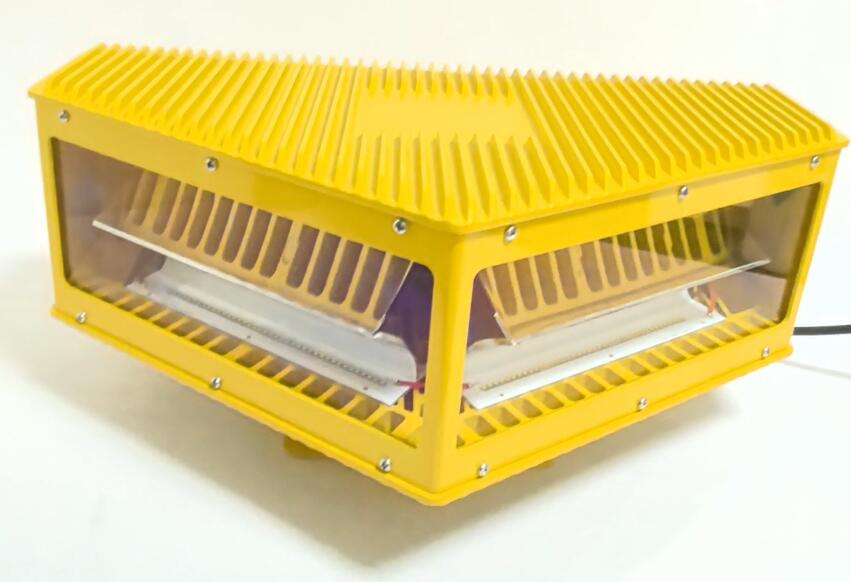The aviation industry's shift toward advanced lighting solutions has made LED aviation lamps the new standard for safety and efficiency. These cutting-edge lighting systems provide superior visibility, reliability, and energy savings compared to traditional incandescent and halogen alternatives. As air traffic grows and regulatory requirements become more stringent, LED aviation lamps play a crucial role in runway lighting, obstacle marking, and aircraft navigation. This article explores their benefits, applications, regulatory compliance, and emerging innovations in aviation lighting technology.
Why LED Aviation Lamps Are Transforming Flight Safety
LED aviation lamps have revolutionized airfield and obstacle lighting due to their unmatched advantages:
Enhanced Brightness & Visibility: LEDs produce intense, focused light that remains visible in fog, rain, and snow.
Energy Efficiency: Consuming up to 80% less power than traditional bulbs, reducing operational costs.

Longer Lifespan: Lasting 50,000+ hours, significantly reducing maintenance frequency.
Durability: Resistant to vibrations, extreme temperatures, and weather conditions.
Instant Illumination: Unlike HID lamps, LEDs reach full brightness immediately, critical for emergency situations.
| led aviation lamp |
These features make LED aviation lamps indispensable for modern airports, helipads, and tall structures near flight paths.
Key Applications of LED Aviation Lamps
1. Runway & Taxiway Lighting
Runway Edge Lights: Define runway boundaries with high-intensity LEDs.
Threshold & End Lights: Mark runway starts and exits for safe takeoffs and landings.
Taxiway Guidance Lights: Blue LED lamps guide aircraft on the ground.
2. Obstacle & Hazard Lighting
Red Obstruction Lamps: Warn pilots of towers, cranes, and wind turbines.
White Strobe Lights: High-intensity flashes for tall structures (e.g., skyscrapers, chimneys).
Helipad Lighting: Ensures safe landings in urban and remote locations.
| led aviation lamps |
3. Aircraft Navigation & Anti-Collision Lights
Wingtip & Tail Beacons: Improve visibility for other pilots.
Strobe Lights: High-visibility flashes to prevent mid-air collisions.
Regulatory Compliance & ICAO/FAA Standards
LED aviation lamps must meet strict international guidelines:
ICAO Annex 14: Specifies light intensity, color, and flash rates for runway and obstacle lighting.
FAA AC 150/5345-46: Defines performance standards for LED airfield lighting in the U.S.
EASA Regulations: Ensures uniformity across European aviation lighting systems.
Compliance ensures interoperability and safety across global aviation networks.
Technological Advancements in LED Aviation Lamps
1. Smart Lighting Systems
Remote Monitoring & Control: Real-time diagnostics and automated fault detection.
Adaptive Brightness: Adjusts intensity based on weather and visibility conditions.
2. Solar-Powered LED Solutions
Ideal for remote airfields with limited power infrastructure.
Reduces carbon footprint while maintaining reliability.
3. Wireless Synchronization
Ensures precise flash sequencing for strobe lights.
Reduces wiring complexity in large installations.
4. Enhanced Durability
Corrosion-Resistant Housings: For coastal and high-humidity environments.
Thermal Management: Prevents overheating in extreme climates.
Challenges & Solutions in LED Aviation Lighting
1. Retrofitting Legacy Systems
Solution: Modular LED fixtures designed for easy replacement of old incandescent lamps.
2. Ensuring Uniform Light Distribution
Solution: Precision optics and beam angle optimization.
3. Extreme Weather Performance
Solution: Ruggedized designs tested for Arctic, desert, and tropical conditions.
4. Regulatory Harmonization
Solution: Manufacturers work closely with ICAO, FAA, and EASA to ensure global compliance.
The Future of LED Aviation Lamps
AI-Integrated Lighting Networks
Predictive maintenance using machine learning.
Dynamic lighting adjustments based on real-time flight data.
Energy-Harvesting LEDs
Self-powered systems using kinetic or solar energy.
Enhanced Pilot-Assist Lighting
Integration with augmented reality (AR) for improved situational awareness.
Sustainable Manufacturing
Recyclable materials and reduced environmental impact.
LED aviation lamps have set a new benchmark in flight safety, offering unparalleled efficiency, reliability, and adaptability. As technology evolves, these lighting systems will continue to enhance runway operations, obstacle visibility, and aircraft navigation. With innovations like smart monitoring, solar power, and AI integration, the future of LED aviation lamps promises even greater advancements in aviation safety and sustainability.
By adhering to global standards and embracing cutting-edge developments, the aviation industry ensures that LED aviation lamps will remain a cornerstone of safe and efficient air travel for decades to come.